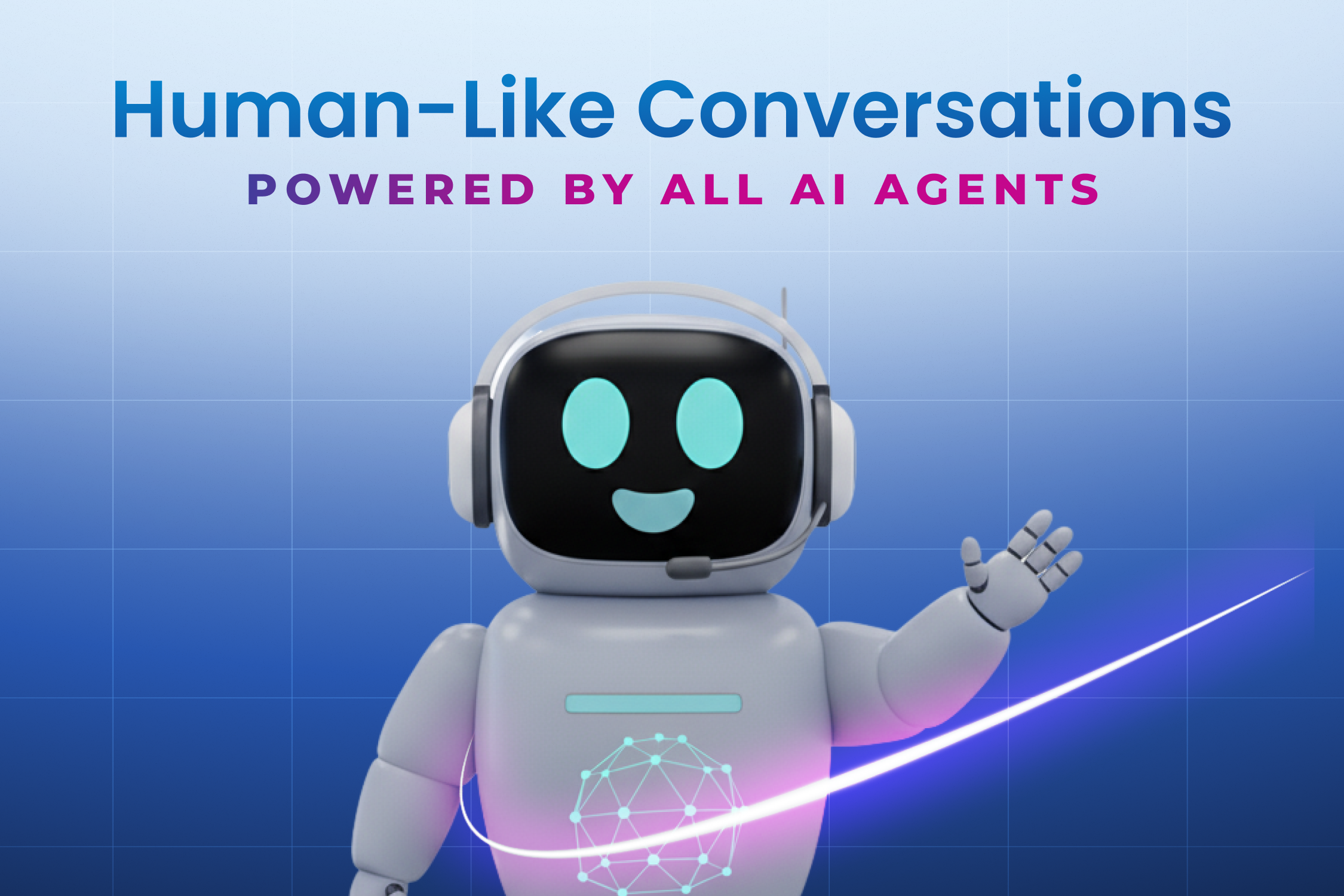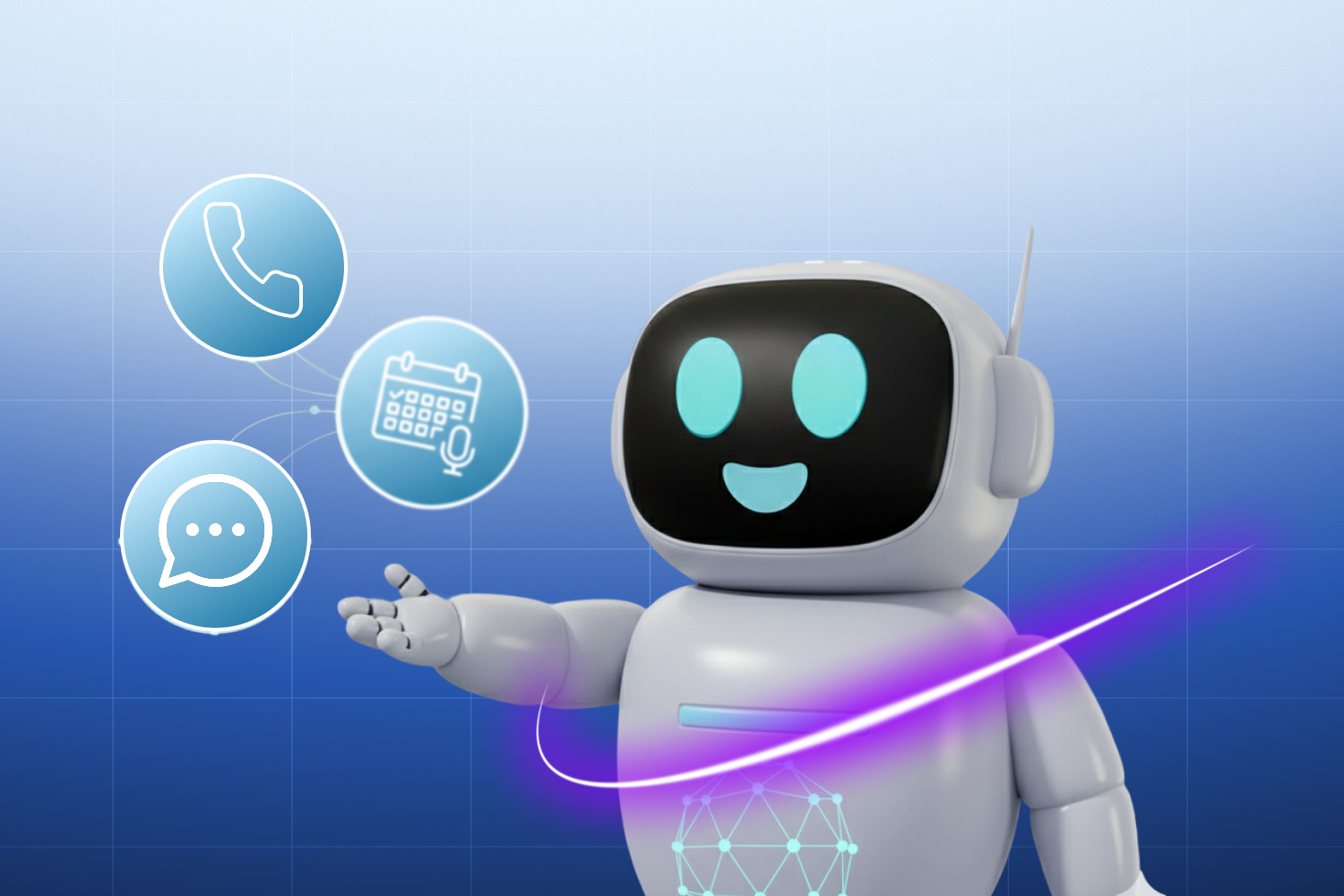The Ethics of Always-On AI: Balancing Automation with Human Touch

The rise of always-on AI—systems that operate continuously across time zones, platforms, and customer channels—has transformed how businesses deliver services, communicate, and innovate. From AI chatbots managing millions of daily interactions to agentic AI systems autonomously booking appointments and resolving issues, automation has made operations faster and more scalable than ever. However, as automation takes on increasingly human-like roles, ethical questions emerge: Can we trust AI to act responsibly? How do we preserve empathy and transparency in a world run by algorithms?
In this blog, we explore the intersection of ethical AI, automation responsibility, and human-AI collaboration, focusing on how businesses can achieve balance between efficiency and empathy.
The Always-On Era of Automation
AI systems are now embedded in nearly every industry—from customer support and finance to healthcare and education. Their ability to function 24/7 brings undeniable benefits: consistency, reduced costs, and instant service availability.
A report by McKinsey & Company highlights that automation can improve productivity by up to 30% and reduce operational inefficiencies at scale.
Yet, this round-the-clock functionality also raises ethical considerations. When AI operates continuously without fatigue, bias correction, or emotional awareness, there is a risk of losing the human touch that builds trust and connection. Businesses must therefore ensure that automation enhances—not replaces—human judgment and empathy.
The Ethical Foundations of AI
To understand ethical AI, we must move beyond technical definitions and focus on principles that guide responsible implementation. Leading organizations, including UNESCO, emphasize that AI ethics rests on four core pillars:
- Transparency: Users should understand how AI systems make decisions.
- Accountability: Businesses must take responsibility for AI-driven outcomes.
- Fairness: AI should avoid discrimination or bias in decision-making.
- Privacy: Data used by AI systems must be protected and handled responsibly.
When these principles are overlooked, AI risks eroding trust and amplifying inequalities. Conversely, embedding them into design frameworks ensures technology supports—not undermines—human values.
Chatbots vs. AI Agents: The Shift Toward Ethical Autonomy
Traditional chatbots operate on predefined scripts and fixed workflows. Their primary function is to answer common questions and assist users in limited contexts. While effective for basic tasks, chatbots lack the contextual intelligence and adaptability necessary for complex human interaction.
In contrast, AI agents leverage conversational AI and agentic automation to make independent decisions. They can analyze intent, tone, and past interactions, allowing them to respond more naturally and empathetically. However, this autonomy introduces ethical challenges:
- How much decision-making power should an AI agent have?
- When should it escalate to a human?
- Can users always tell when they’re speaking to a machine?
The European Commission’s Ethics Guidelines for Trustworthy AI emphasize that autonomy must always be paired with human oversight. In other words, AI can assist and act independently—but ultimate accountability should remain with people.
The Human-AI Collaboration Model
To achieve balance, organizations must embrace a collaborative model where AI augments human strengths rather than replacing them. In customer-facing contexts, this means designing workflows where AI handles repetitive or data-driven tasks while humans manage nuanced, emotional, or ethical decisions.
For example:
- In healthcare, AI can analyze diagnostic images instantly, but doctors interpret results and communicate them with empathy.
- In customer support, AI voice agents can manage 24/7 inquiries, while human representatives handle escalations that require judgment or care.
All AI Agents follows this hybrid approach by developing AI systems that seamlessly hand off complex cases to humans. This ensures automation efficiency while maintaining empathy and trust.
The Risks of Over-Automation
Without ethical oversight, over-reliance on AI can lead to depersonalized experiences, misinformation, or even harm. The key risks include:
1. Loss of Empathy
Always-on systems may deliver quick answers but often lack emotional understanding. An ethical AI framework includes sentiment detection and escalation protocols that transfer conversations to humans when empathy is needed.
2. Data Privacy and Consent
AI agents process massive amounts of data to learn and personalize. According to the OECD AI Principles, privacy and user consent must remain non-negotiable. Users should be aware when they’re interacting with AI and how their data is used.
3. Bias and Discrimination
AI systems learn from historical data, which can perpetuate existing biases. Ethical AI development requires continuous auditing and diverse data sets to ensure fairness.
4. Transparency Gaps
Opaque algorithms can create a “black box” effect where users can’t understand decisions. Ethical design means building explainable systems where outputs can be traced back to logical reasoning.
Best Practices for Responsible Automation
Businesses implementing AI agents can follow these actionable steps to ensure ethical alignment:
1. Establish Human Oversight Protocols
Always include human checkpoints in decision-making processes. AI should handle tasks autonomously but flag exceptions for review.
2. Create Transparent Communication
Users should know when they’re interacting with AI and when a human will intervene. Clear disclaimers build trust and prevent confusion.
3. Implement Continuous Monitoring
AI systems should be regularly audited for performance, fairness, and security. Monitoring prevents drift—when models evolve unpredictably over time.
4. Design for Empathy
Incorporate sentiment analysis and adaptive tone modulation. This ensures AI maintains conversational warmth and recognizes emotional cues.
5. Respect Boundaries
Avoid overreach. Ethical automation means ensuring AI respects privacy, consent, and context limits.
Balancing Automation with Empathy: The Role of Design
Ethical AI begins at the design phase. Engineers and designers must consider how users feel when interacting with automation. This includes:
- Providing options for human contact.
- Allowing users to opt out of AI conversations.
- Designing interactions that feel natural, transparent, and respectful.
Stanford University’s Human-Centered AI research emphasizes that ethical design doesn’t hinder innovation—it strengthens adoption. When people trust technology, they’re more likely to engage with it.
Agentic AI and the Future of Responsibility
The next wave of automation—agentic AI—will see systems capable of proactive reasoning and collaboration. These AI agents won’t just react to input; they’ll anticipate needs, initiate actions, and learn from feedback. While this evolution enhances efficiency, it also magnifies the need for accountability frameworks.
The World Economic Forum’s Global AI Governance Framework highlights that governments, developers, and organizations must collaborate to ensure transparency, safety, and inclusivity as agentic systems evolve.
To remain ethical, businesses must embed governance structures such as:
- AI Ethics Committees to review deployments.
- Bias Testing Pipelines to identify and correct discriminatory behavior.
- Explainability Models to provide clear decision logic.
These steps help maintain public trust while encouraging innovation.
Case Study: Human-AI Collaboration in Practice
Consider a financial institution using AI for loan applications. A traditional chatbot might approve or deny based on predefined rules. An AI agent, however, considers multiple factors—income, repayment history, spending patterns—while also explaining the reasoning behind its recommendation. If ambiguity arises, the case is escalated to a human underwriter.
This hybrid approach improves both efficiency and fairness. It demonstrates that the best AI systems don’t remove humans from the loop—they elevate them.
Conclusion
The era of always-on AI is here, and it brings both promise and responsibility. Businesses must navigate this frontier with a clear ethical compass—one that prioritizes transparency, accountability, and empathy. The goal is not to replace human touch but to extend it through intelligent collaboration.
At All AI Agents, we believe in building automation that listens, learns, and respects human values. By combining conversational AI, agentic automation, and ethical design, we help organizations deliver intelligent, empathetic, and responsible experiences 24/7.
Learn more: Book a Demo with All AI Agents to see how we balance automation with human connection.








